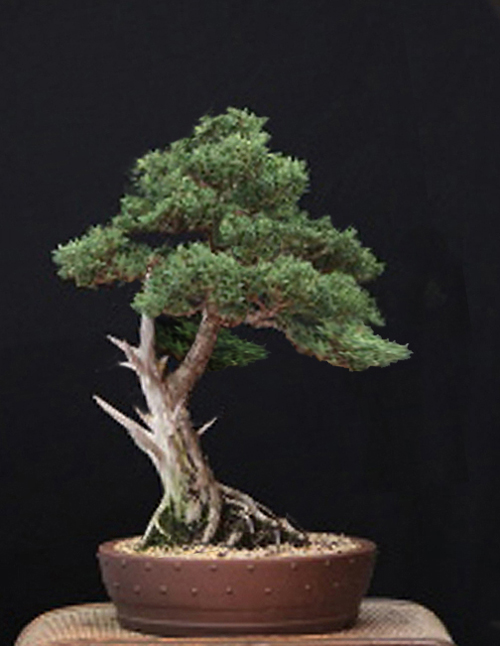
Robert’s simulation. My apologies for the fuzzy. The original (below) was submitted by Leigh Taafe.
 The original.
The original.
Robert’s critique
From the trunk’s feature (the jin & shari), we can tell that this tree (in nature) has gone through a transformation process, and the new crown is formed from what was originally a branch.
The initial form of this tree might be entirely different from the present. Due to some reason, a major part of the trunk died. When this happened, one of the branches grew dominant to form new shape. This is the story (the romance) that this bonsai conveys. Still, as always, any tree should be designed while keeping the harmony between the horticultural and the aesthetic in mind.
On this bonsai, there are too many jin; this creates a chaotic effect. Jin should be used as a simple accent (not the dominant feature).
Also, the crown is too round and heavy and the overall composition seems to lack visual balance.
Solution :
1. Reduce and eliminate some of the jin.
2. In order to improve the visual balance, lean the trunk slightly to the left to counter balance the heavy crown.
3. Reduce the crown’s height and trim the foliage to create a more natural irregular shape with the tip of the lowest branch flowing out to the right.
Now the overall composition is improved and the result conveys a more natural and aesthetically pleasing effect.
There is more than one way to design any bonsai and my critiques and recommended solutions might not always fit your taste because of personal preferences. But I always try to give my opinion based on artistic and horticultural principles.
To understand my concepts better, please read my books Vision of My Soul and Mission of Transformation which are available at Stone Lantern.
You can also visit my bonsai blog.